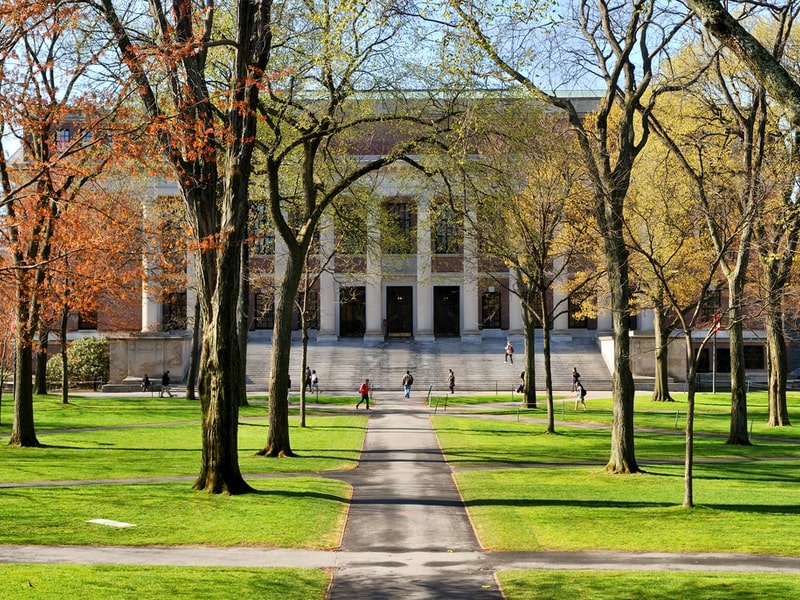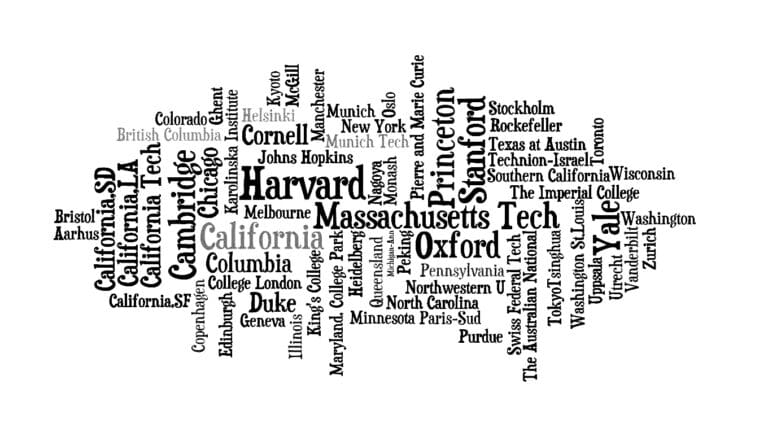How Many Safety Schools Should You Apply To? The Ultimate College List
Refrain from applying only to your top-choice schools.
Since most of them are selective and do not guarantee admission, it’s also wise to apply to colleges where your chances of getting in are high.
In a college list, those institutions are called safety schools.
Your academic profile is superior to that of the incoming class, plus the school’s features, from the location to the programs offered, match your preference.
You should add two to three safety schools to your college list to make it balanced.
Add too few safety schools, and you risk not having any school to attend in the next academic year. Add too many of them, and you deprive yourself of the chance of going to a first-choice institution.

Safety vs. Match vs. Reach Schools
A college list with nothing but safety schools isn’t balanced.
Knowing the difference between safety schools and other types of schools your college list should also include is crucial. It lets you have a clear sense of direction as you shortlist institutions.
Primary setting different schools apart is your chances of getting into them.
Things Safety and Reach Schools Have in Common
Safety schools and reach schools are on the extreme ends of the spectrum in this regard — safety schools offer the highest acceptance rates, while reach schools offer the lowest acceptance rates.
As such, adding lots of them to your college list is a no-no.
The consensus is that you should consider applying to no more than two to three safety and reach schools.
Including more than three safety schools in your college list is letting go of the opportunity to see whether or not any of your top-choice schools will send you an offer to enroll.
On the other hand, having more than three reach schools is just wishful thinking.
Outnumbering Safety and Reach Schools With Match Schools
A balanced college list has more match schools than safety and reach schools.
While getting into them with your academic profile isn’t that hard, they also do not guarantee your admission either — unless the college is open admissions or enrollment with a 100% acceptance rate, admission is not guaranteed.
Your chances of getting into a match school range from 30% to 60%.
Because your chances of receiving an acceptance letter are less than for safety schools but better than for reach schools, some college admissions experts refer to match schools as 50/50 schools.
Add three to four match schools to balance out your college list.
Here’s a table comparing the key features of safety, match, and reach schools:
| School Type | Acceptance Rate | Number on a College List |
|---|---|---|
| Safety school | 80% or higher | 2-3 |
| Match school | 30% to 60% | 3-4 |
| Reach school | Less than 20% to 25% | 2-3 |
Safety Schools Aren’t Terrible Schools
Indeed, safety schools are more likely to accept you than match and, even more so, reach schools.
But there’s more to picking safety schools than checking which ones have the highest acceptance rates.
Just because an academic institution has an acceptance rate of 80% or more doesn’t immediately mean it would make for the perfect addition to your college list.
Low Selectivity Doesn’t Have to Mean Low-Quality Education
A lot of college-bound teens believe that all non-selective schools are bad.
Sometimes, a school has a high acceptance rate simply because it has plenty of available slots to fill every academic year, such as in the case of many public flagship universities.
Take Texas A&M University as an example.
Its 63% acceptance rate makes it clear that it’s no Ivy League school.
However, as a flagship institution that receives funding from the government, it can welcome its doors to lots of students who want to get their hands on a degree.
As of this writing, it has 74,000+ students, making it one of the largest in the country enrollment-wise.
Texas A&M is #47 in National Universities and #20 in Top Public Schools by US News. The college ranking site also highly ranks its engineering, computer science, business, and nursing undergraduate programs.

Highly Ranked Even With High Acceptance Rates
As mentioned earlier, safety schools have acceptance rates of not less than 80%.
Finding highly ranked colleges and universities that meet this rule is easier than you think — checking out college rankings is a great starting point when adding safety schools to your college list.
For instance, Niche has a Best Colleges With High Acceptance Rates in America ranking.
Many institutions in the said list (two-year and four-year schools alike) have acceptance rates higher than 90%, but they also have better reputations than most other schools with low selectivity rates.
Let’s take a look at Niche’s top 15 Best Colleges With High Acceptance Rates (four-year colleges only):
| Institution Name | Acceptance Rate |
|---|---|
| Iowa State University | 90% |
| Iowa State University | 89% |
| New Mexico Tech | 74% |
| University of Kansas | 88% |
| Kansas State University | 95% |
| University of Wyoming | 96% |
| University of Kentucky | 95% |
| University of Southern Mississippi | 99% |
| Virginia Commonwealth University | 91% |
| University of Texas at Tyler | 94% |
| George Mason University | 90% |
| University of Houston – Clear Lake | 91% |
| Hope College | 80% |
| Nova Southeastern University | 76% |
| Utah State University | 94% |
Related Article: Can You Get Into College Without Extracurriculars?
Acceptance Rate: Not the Only Safety School Criterion
Refrain from assuming that just because a college or university accepts 80% of applicants or more means it’s something that you can include to your college list as a safety school.
Likewise, refrain from assuming that safety schools are mere backups.
Besides a high acceptance rate, there’s something else that safety schools share.
And it’s none other than you should be fine attending them.
Safety schools are like your safety net — in case none of your first- and second-choice institutions accept you, you can rest assured that there’s something you can attend in the coming academic year.
Surpassing the Academic Profile of Admits
It’s also a must that you check the academic profile of the incoming freshmen student, either by visiting the college’s website or accessing its most recent Common Data Set (CDS).
Check that your high school GPA is higher than the average for admits.
Especially if the institution is a test-required or test-optional school, try to ensure that your composite SAT or ACT score is higher than the 75th percentile of the college.
Related Article: Getting Into College With High GPA But Low SAT/ACT
Look Into Cost and Financial Aid
Not all colleges with low selectivity levels are public schools with low tuition costs.
Similarly, not all public institutions of higher education that make a bachelor’s degree accessible to students from low-income backgrounds offer generous financial aid packages.
See whether or not your family can afford to pay for your education regardless of the financial aid offer.
Check That They’re Best-Fit Schools
Research prospective safety schools as you would top-choice schools.
It means that it should match your preferences in terms of things like location, campus type, class sizes, and extracurriculars. Of course, it should have the academic program of your liking.
The bottom line is you should be happy going to a safety school if it gives you an offer to enroll.
Read Next: Best Non-Ivy League Schools Along The East Coast
Disclaimer: The views and opinions expressed in this article are those of the authors and do not necessarily represent those of the College Reality Check.
